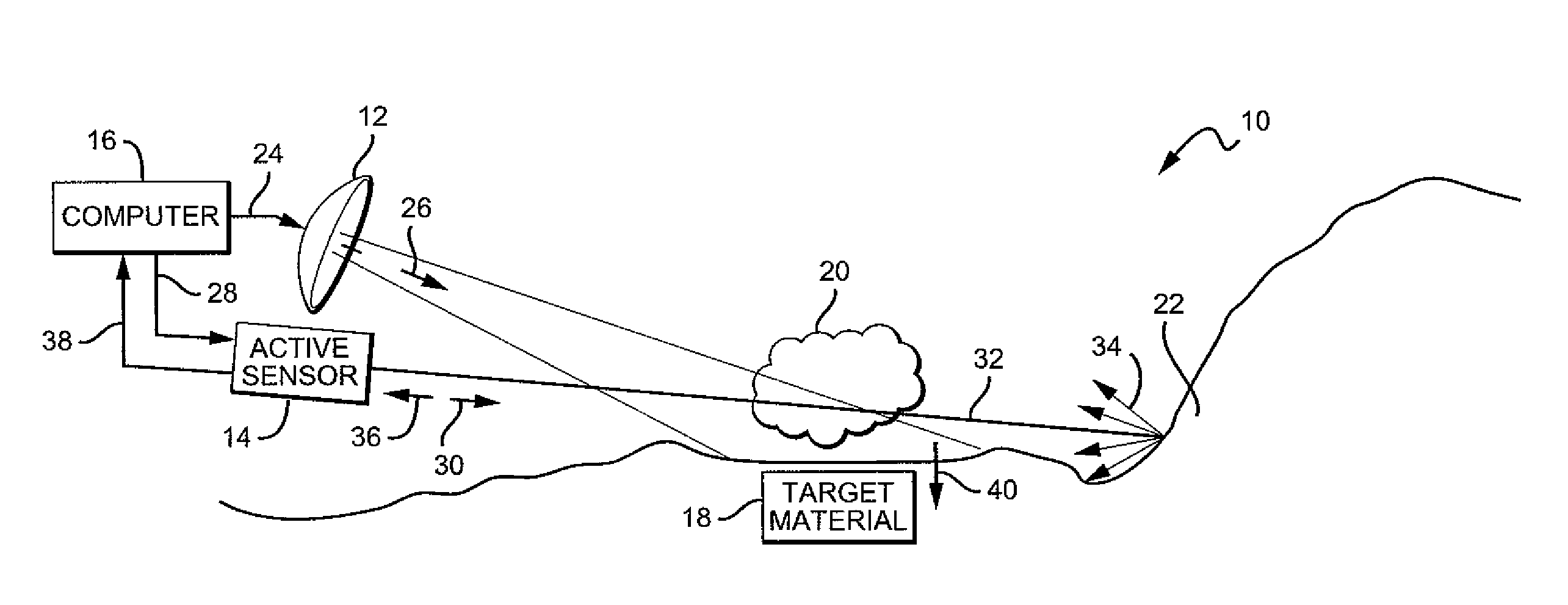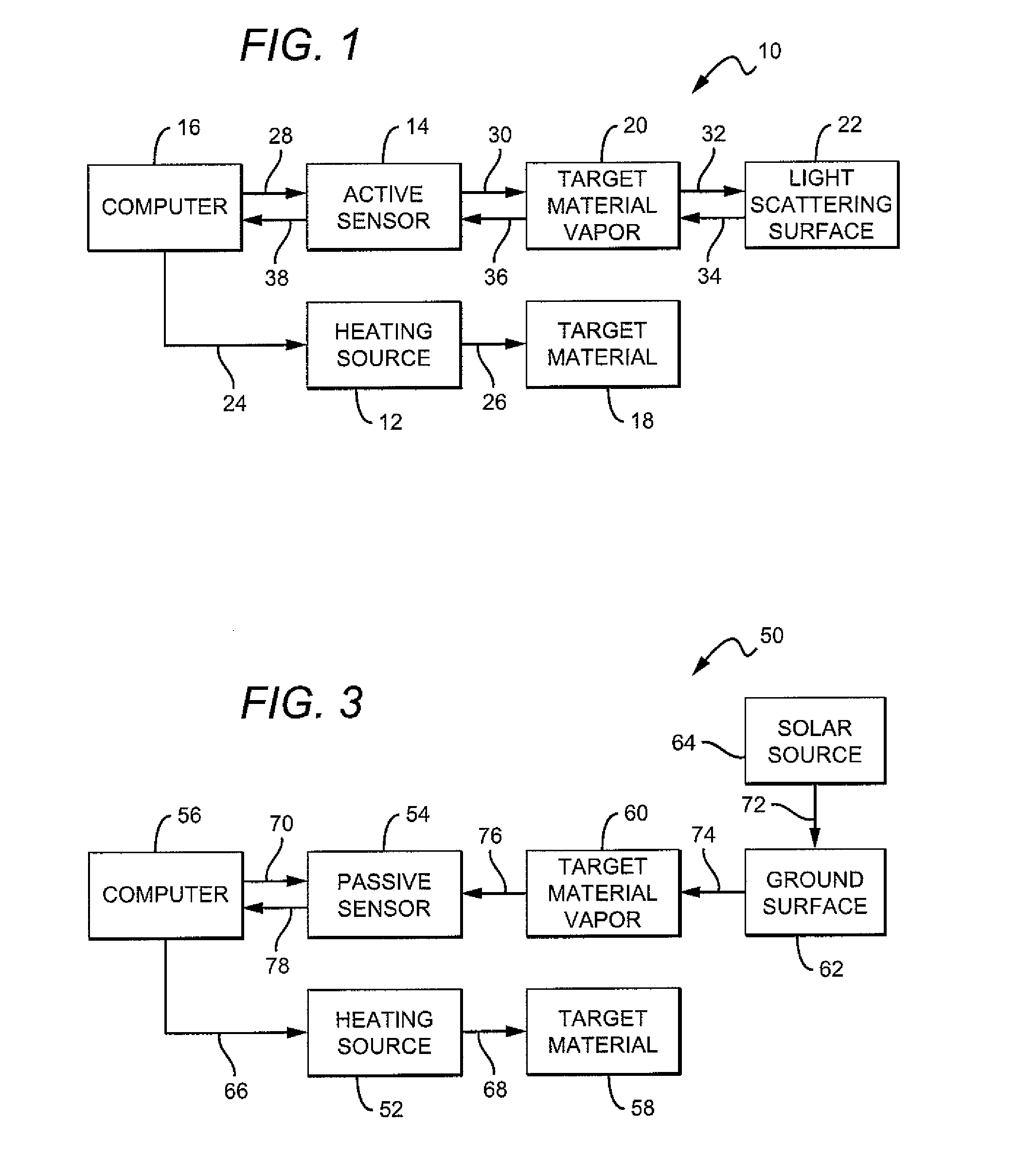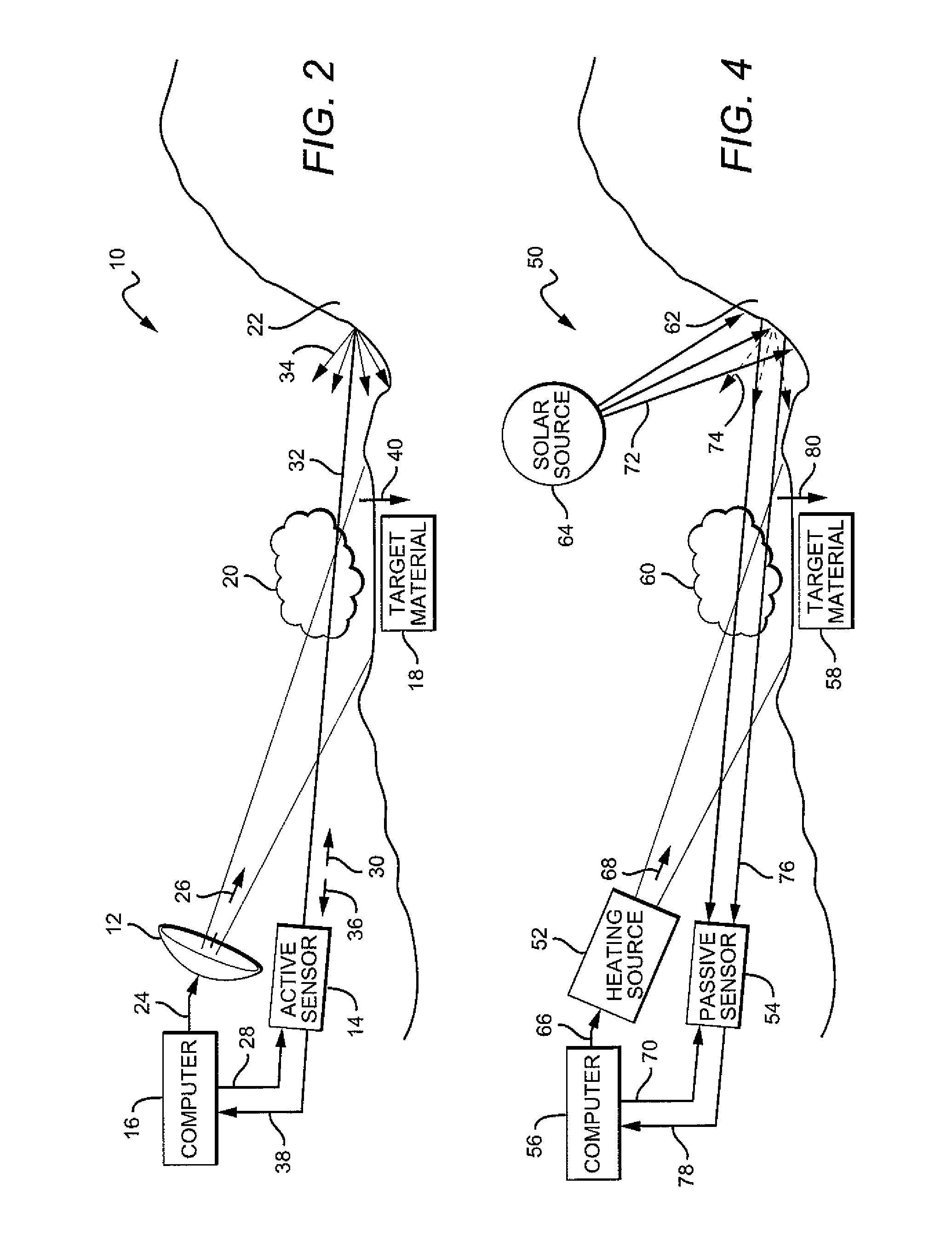Method and system for enhanced remote detection of low concentration vapors
- Summary
- Abstract
- Description
- Claims
- Application Information
AI Technical Summary
Benefits of technology
Problems solved by technology
Method used
Image
Examples
embodiment 10
[0022]Referring now to the drawings, FIG. 1 is a block diagram of a first disclosed embodiment 10 of the method with a heating source and an active sensor. FIG. 1 shows a heating source 12, an active sensor 14, a computer 16, a target material 18, a target material vapor 20, and a light scattering surface 22. The computer 16 initiates a heating beam generator control signal 24, such as a microwave generator control signal, to the heating source 12. The heating source 12, such as a high power microwave beam generator, heats the target material 18 with a heating beam 26, such as a microwave beam. The heating source 12 heats the target material 18 for an effective period of time so that the temperature of the target material increases and the vapor pressure of the target material increases. The target material vapor 20 is emitted from the target material 18 upon heating. The computer 16 initiates a control and sensor signal 28, such as a laser control, to activate the active sensor 14....
embodiment 50
[0024]FIG. 3 is a block diagram of a second disclosed embodiment 50 of the method with a heating source and a passive sensor. FIG. 3 shows a heating source 52, a passive sensor 54, a computer 56, a target material 58, a target material vapor 60, a ground surface 62, and a solar source 64. The computer 56 initiates a heating beam generator control signal 66, such as a high power infrared laser signal, to the heating source 52. The heating source 52, such as a high power infrared laser, heats the target material 58 with a heating beam 68, such as an infrared laser beam. The heating source 52 heats the target material 58 for an effective period of time so that the temperature of the target material increases and the vapor pressure of the target material increases. The target material vapor 60 is emitted from the target material 58 upon heating. The computer 56 initiates a control and sensor signal 70 to activate the passive sensor 54. The solar source 64, such as the sun, emits solar r...
PUM
 Login to View More
Login to View More Abstract
Description
Claims
Application Information
 Login to View More
Login to View More - R&D
- Intellectual Property
- Life Sciences
- Materials
- Tech Scout
- Unparalleled Data Quality
- Higher Quality Content
- 60% Fewer Hallucinations
Browse by: Latest US Patents, China's latest patents, Technical Efficacy Thesaurus, Application Domain, Technology Topic, Popular Technical Reports.
© 2025 PatSnap. All rights reserved.Legal|Privacy policy|Modern Slavery Act Transparency Statement|Sitemap|About US| Contact US: help@patsnap.com



